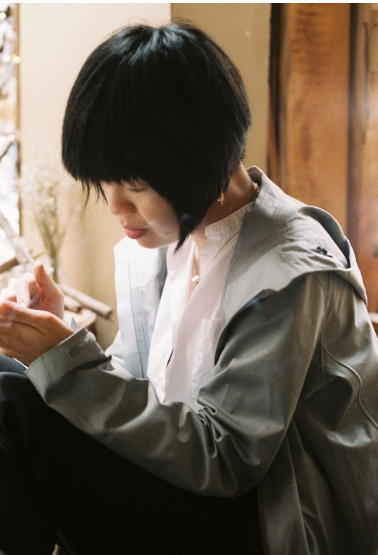The Gathering is the Message: Taiwan Art Space Alliance (TASA) Annual Meeting 2024
Introduction: A Shift in Focus
When I first began my research on international cultural mobility in Taiwan, my primary interest lay in understanding the development of the Cultural Mobility Funding Guide for artists and cultural practitioners, particularly through collaborations between Taiwan’s Ministry of Culture, TASA (Taiwan Art Space Alliance), and On the Move. This guide had served as a key resource when I started the Artist-in-Residence Vietnam Network (AiRViNe) initiative. However, during my trip to Taiwan, I realized that the TASA annual meeting itself—held this year under the theme “Arts Residencies in Taiwan Today”—deserved greater attention. This gathering offered profound insights into how cultural exchange and collaboration can be nurtured through the exchange of ideas, experiences, and resources.
First Encounters with TASA and the Power of Case Studies
My initial encounter with TASA was through the Taiwan Mobility Guide, which struck me as the most comprehensive and well-organized of all the mobility guides listed on the On the Move website. From that moment, I was intrigued by Taiwan's art ecosystem and curious about the process behind creating such a robust resource. But it wasn’t until this year, when I had the privilege of attending TASA's annual meeting, that I truly began to understand the significance of the alliance.
One key realization was the role of case studies in this process. In 2023, I had conversations with Jennifer Lee from Mekong Cultural Hub, who explained that in Taiwan, they do not rely on a conventional index of creative hubs and art spaces, but instead, they work through entries of case studies. This method of sharing knowledge through individual stories and practical examples came to life for me at the TASA meeting. Each conversation I had led me to someone else whose experience, practices, or resources were relevant to my own. This network of knowledge-sharing became more than just discussions—it was an active, living practice of mediation and collaboration.
TASA Annual Meeting: A Break from Traditional Formats
The term “annual meeting” typically suggests a formal gathering where members of an organization review the past year’s activities and plan for the future. In Taiwan, I’ve come across many similar alliances and associations in the arts and culture sectors—such as the Taiwan Museum Association, Taiwan Art Gallery Association, and Taiwan Women’s Art Association—but TASA’s annual meeting broke all expectations of such a format.
The gathering felt more like an open exchange of knowledge, ideas, and practices. It resembled the “lumbung” concept introduced at documenta fifteen, where a communal building stores and distributes a community’s harvest based on collectively determined criteria. In the case of TASA, however, the focus was on art managers, coordinators, and cultural practitioners, rather than artists. For three days, individuals from various regions came together to reflect on their practices, share challenges, and explore potential collaborations. It wasn’t just a matter of networking—it was a multi-sensory experience of building trust, listening, and envisioning future possibilities.
The annual meeting fostered an environment where conversations transcended the binary of East-West or global North-South, allowing for a new framework that addressed experiences from all corners of the world. I was struck by how each participant brought their own context to the table—whether it was about their local resources, their organizational challenges, or their visions for future collaboration. This exchange created a trajectory for cooperation beyond geographical or cultural borders.
The unstructured nature of the meeting encouraged us to break the norms of traditional organizational gatherings. Instead of formal speeches and presentations, there were yoga sessions, workshops, and informal gatherings over meals. This combination of professional exchange and personal interaction fostered an openness that extended beyond mere artistic discussions to touch on every aspect of organizational practice—whether in front, behind, above, or below the artistic process.
As I reflect on my time at the TASA annual meeting, I see many lessons for developing the AiRViNe network. The sustainable and collaborative model that TASA has built over the years, with its focus on practical case studies and the organic creation of knowledge, offers a template for how AiRViNe can grow. Just as TASA has facilitated a network of residency programs and art spaces across Taiwan, I aim to create similar opportunities in Vietnam—where AiRViNe now is recognized as On The Move’s official member. TASA’s success offers a path forward for AiRViNe, one based on collaboration, flexibility, and the collective sharing of resources.
The Gathering is the Message
Borrowing from Marshall McLuhan’s famous phrase, “The medium is the message,” I believe that TASA’s annual meeting sends a powerful message to all cultural practitioners: that we are not alone. The gathering itself, with its emphasis on shared knowledge and collaborative practices, is a potent resource for everyone involved. Through the power of collective reflection and exchange, the annual meeting becomes more than just a procedural event—it transforms into a platform for generating new ideas, fostering connections, and creating a shared sense of purpose among cultural professionals worldwide.
As I return to my work in Vietnam, I carry with me the lessons learned at TASA and the belief that such gatherings can reshape the future of artistic collaboration. Through these gatherings, knowledge is not only shared but also produced—opening up infinite possibilities for the future of art and cultural mobility.
About the Author:

Nguyễn Tú Hằng is the founder of Artist-in-Residence Vietnam Network (AiRViNe) - dedicated to research on cultural mobility and residency programs, and Managing Partner at Hanoi Grapevine - a leading platform for supporting artists' ecosystem and has been engaging in communication consulting and research with different roles in various cultural projects in Vietnam.
The 2024 Asian Artists Exchange Program: Multilateral Bridging Workshop, themed "Building Taiwan’s Cultural Connections through Global Art Exchange," focused on the role of civilian organizations as platforms for promoting sustainable transnational exchanges. Discussions examined how these platforms can effectively foster global collaboration and assessed the tangible impact of international cultural exchanges in terms of influence and sustainability.
